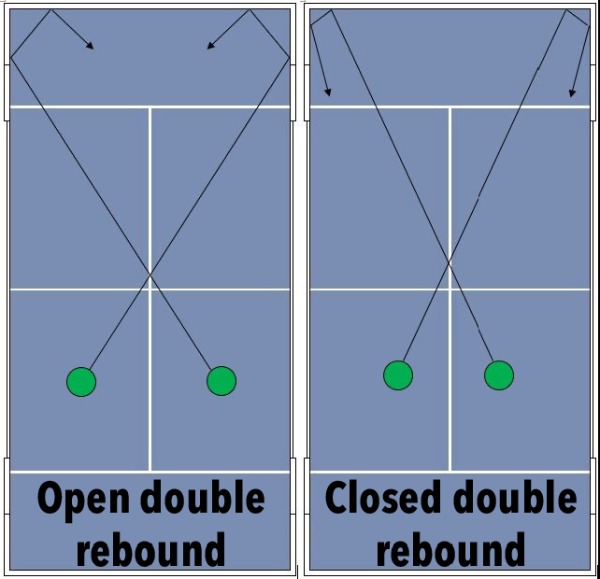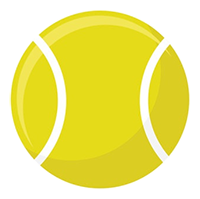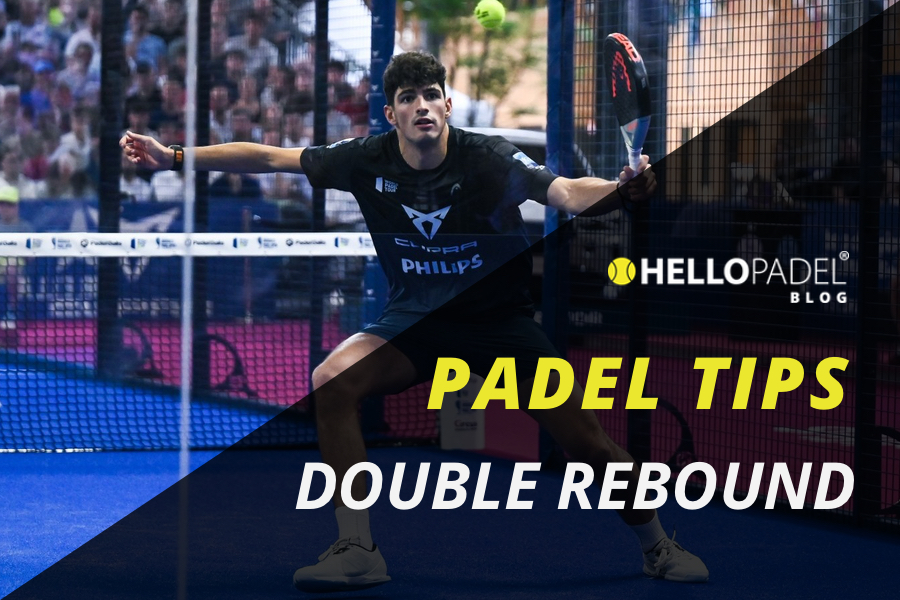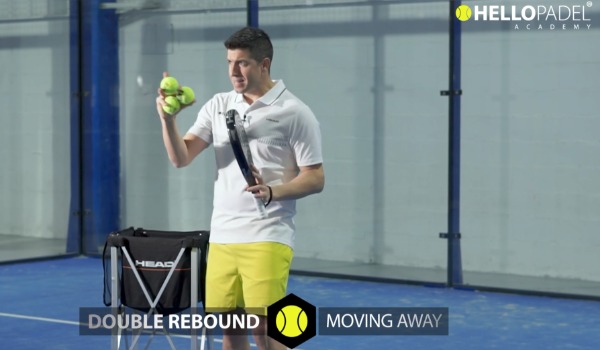INTRODUCTION
One of the inherent characteristics of padel that differentiates it from tennis, the closest sport, is the use of walls (side and back walls) during the game.Of course this includes the double rebound.
And look how important the walls are in padel that they have even given names to the different technical executions that we perform when the ball interacts with one or two walls, such as the back wall boast or the after the wall smash.
In the case of this article, we will talk about the shot that is made when the ball bounces off the two walls (side <-> back), a shot that is known as “the double rebound”.
For those who do not know this stroke, the double rebound is probably one of the most difficult defensive strokes to perform successfully, but mastering this stroke will be essential if we want to have a good defence.
TYPES OF DOUBLE REBOUND
We can differentiate up to 4 types of double rebound depending on which wall the ball touches first and which side of the court the ball goes to.
Thus, we can find the double rebound to the:
– Open forehand. First it hits the side wall and then the back wall.
– Closed forehand. First hit to the back wall and then to the side wall.
– Open backhand. First hit the side wall and then the back wall.
– Backhand closed. First hit the back wall and then the side wall.
Although both types of double rebounds are tricky, many pros agree that the closed double rebound is a little more difficult than the open double rebound.
HOW TO RETURN A BALL THAT BOUNCES OFF A DOUBLE WALL
To return a ball that is going to bounce off the two walls we have two options: either we have to move or we have to spin.
It is almost always easier and more advisable to opt for the displacement, as we will always be facing the net and we will be able to hit the ball while facing forwards and towards our opponents.
So, when should we opt for the turn to return a double wall?
Basically, in two cases.
Firstly. When the ball is very close to the corner and we don’t know if the ball is going to go side-to-side or back-to-back. In this case, the experts recommend making the turn once the ball has left the corner and we know where it is going.
And secondly, in the case of a very open double wall. In this situation, if we would like to return the ball by opting to move, we would have to move very far towards the centre of the court, which would mean that we would be very far away from the ideal place to defend on court, which could compromise the return of the opponent’s next ball.
It is important to know that the turn is an even more difficult stroke to perform well than the displacement, but it has the advantage that it maintains our ideal position on the court and we are ready to respond to the opponent’s next shot.
Key points for a successful double wall return
Positioning on the court.
The recommended position would be between the service line and the back wall and in the place where, stretching the arm with the paddle, we almost touch both the back wall and the side wall.
This place would coincide with the imaginary perpendicular line that would come out of the joint of the first back glass and the imaginary perpendicular line that would come out of the joint of the first side glass.
At this point we will be positioned close enough to both the side wall and the back wall to be able to return the double walls in the best possible way.
Discern whether the ball is going to open or close.
If the ball comes towards our body and we have to move away, it will be a closing double, it will first touch the back wall and then the side wall. If, on the other hand, the ball is clearly coming from the right or left side, the sides closest to the side areas, it will be a double that opens, first hitting the side wall and then the back wall.
It is very important to always look for this position after each stroke, as this way, with practice and by seeing and returning many balls, we will be able to read the trajectory of the ball better and we will be able to discern if it is going to open or close.


Continental grip.
This is the recommended grip in the vast majority of cases, as it will be useful for both forehand and backhand returns.
Correct reading of the ball
Correctly reading the trajectory that the ball is going to follow in a double wall will be fundamental to successfully hit this shot.
This is achieved by correctly interpreting the variables of speed, angle and spin with which the ball is coming at us. And this, as with almost everything in life, will come from experience, from having practiced many double walls.
HOW TO PLAY IT TACTICALLY
Although the best decision we can make when a double wall ball comes to us will depend on several factors, such as our level, how the ball is coming, where our opponents are, etc., as a general rule, after a double wall, the easiest and most advisable thing to do is to hit a lob to have time to reposition ourselves and, if it is well executed, to go up to the net to attack.
But remember that, as we have said, the best option will always depend on each ball and situation.
OTHER CONSIDERATIONS
Although it is possible for the player in front of us to play a double wall, most of the time this will come from the cross court player, as he will always have a much wider range of angles available and his double rebound will be more difficult to return.
If the player we have in parallel tries to double wall us, often the ball will bounce more like an off the wall than a double wall due to the lack of an angle.
CONCLUSION
Returning a ball that generates a double wall effectively is no easy task. That is why, logically, it is not one of the first strokes that is taught when you start playing padel.
Before starting to work with double walls, it would be a good idea for the player to master and read well the balls that come with a single bounce, such as the off the back wall or the balls that bounce only to the side glass.
The fact that the ball bounces on two glass panes and that these bounces vary depending on the speed, spin, angle and height of the ball, makes it very difficult for less advanced players to successfully predict where the ball will end up going.
On top of that, in addition to the complexity of predicting the trajectory of the ball bouncing off two panes of glass, there is the speed at which we have to move. Normally we will have very little time and we will have to move very fast to be in the right place at the right time.
So, learning and mastering this shot is going to be a challenge for the padel player but it will certainly be worth it as you will see how your defence improves significantly. Get training!


 Upgrade now
Upgrade now






